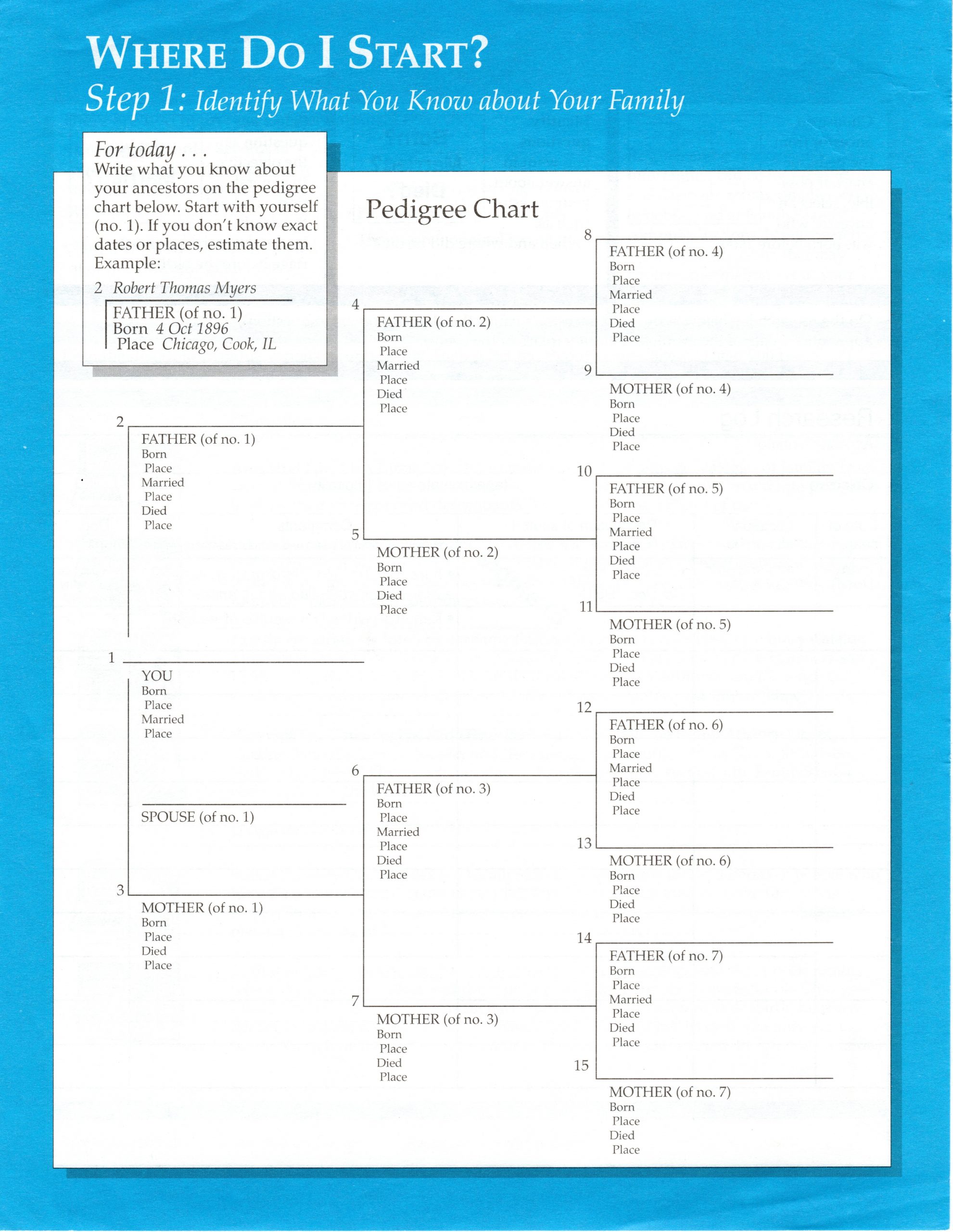Resources for Beginners
Getting Started to Explore Your Roots
Always start with yourself first! Take stock of what you know and don’t know of your family by filling in a Pedigree (or Ancestor) Chart and a Family Group Sheet with as much information as you have. Each couple on your Pedigree Chart will have their own Family Group Sheet.
A Pedigree or Ancestor Chart tracks your individual family history back through time. This means that every person listed on the chart is directly related to you: you as the focus individual, your parents, their parents, and so on—usually going back six or seven generations.
A Family Group Sheet records families as groups. If you are married and have children, a family group chart will ask you to list yourself and your spouse along with relevant dates (birth, death, wedding). You will also list each of your children with their birth and other dates (as appropriate). You can fill out a family group chart for any couple and their children in your family tree.
FORMS and CHARTS
There are lots of forms to be found online to help organize your tree:
* National Genealogical Society (NGS) has free charts that are “fillable”.
That means you can:
- download the PDF,
- type your family information right into the chart,
- save it to your computer, and
- update it at any time.
https://www.ngsgenealogy.org/free-resources/charts/
* Ancestry.com has forms you can download and print for free and you don’t need a subscription to download these forms: https://www.ancestry.com/cs/charts-and-forms
* And then there’s FamilySearch! Their Genealogy Research Forms link https://www.familysearch.org/wiki/en/Genealogy_Research_Forms can be overwhelming for the beginner as it contains links to so many other forms that you will encounter along your journey. But start with the Family groups, pedigrees, and research logs section for the Pedigree and Family Group Forms.
Family Group Sheet

Filling Out Charts
Here are a few basic “do’s and don’ts”:
- Do not abbreviate names, dates, and places.
- Enter the full name: first, middle, and last.
- Surnames/last names are entered in caps; enter the last name first: BROWN, William Sylvester
- For women, supply the full maiden name, not a married name.
- Write dates in this format: Day-Month-Year (e.g., 12 October 1989).
- Enter full place names: City, County, State, Country (e.g., Atascadero, San Luis Obispo, California, United States).
Terminology
Some definitions that will help get you started can be found at MyHeritage https://education.myheritage.com/article/genealogy-glossary-common-genealogy-terms-explained/. Family Tree Magazine has a Comprehensive Genealogy Glossary https://www.familytreemagazine.com/strategies/glossary/
Especially for Young People interested in starting their journey into Family History
A helpful resource that had been found by someone working on their Genealogy Badge for Scouting shared “a really cool resource all about genealogy and building a family tree”: https://www.aaastateofplay.com/genealogy-for-kids-building-a-family-tree/
More helpful resources can be found on NEHGS American Ancestors: https://www.americanancestors.org/tools/youth-education-resources
And be sure to check out the links for General Research in the Resources tab: https://slocgs.org/general-research/
We’re here to help!
A SLOCGS Library volunteer can help guide you on your discovery! Check our website calendar for the days & times our SLO library is open. (hours vary depending on volunteer availability). You can send an email to slocgscontact@gmail.com to request an appointment outside of these hours or for any other guidance.
Our members and volunteers are eager to help spread the genealogy bug!
